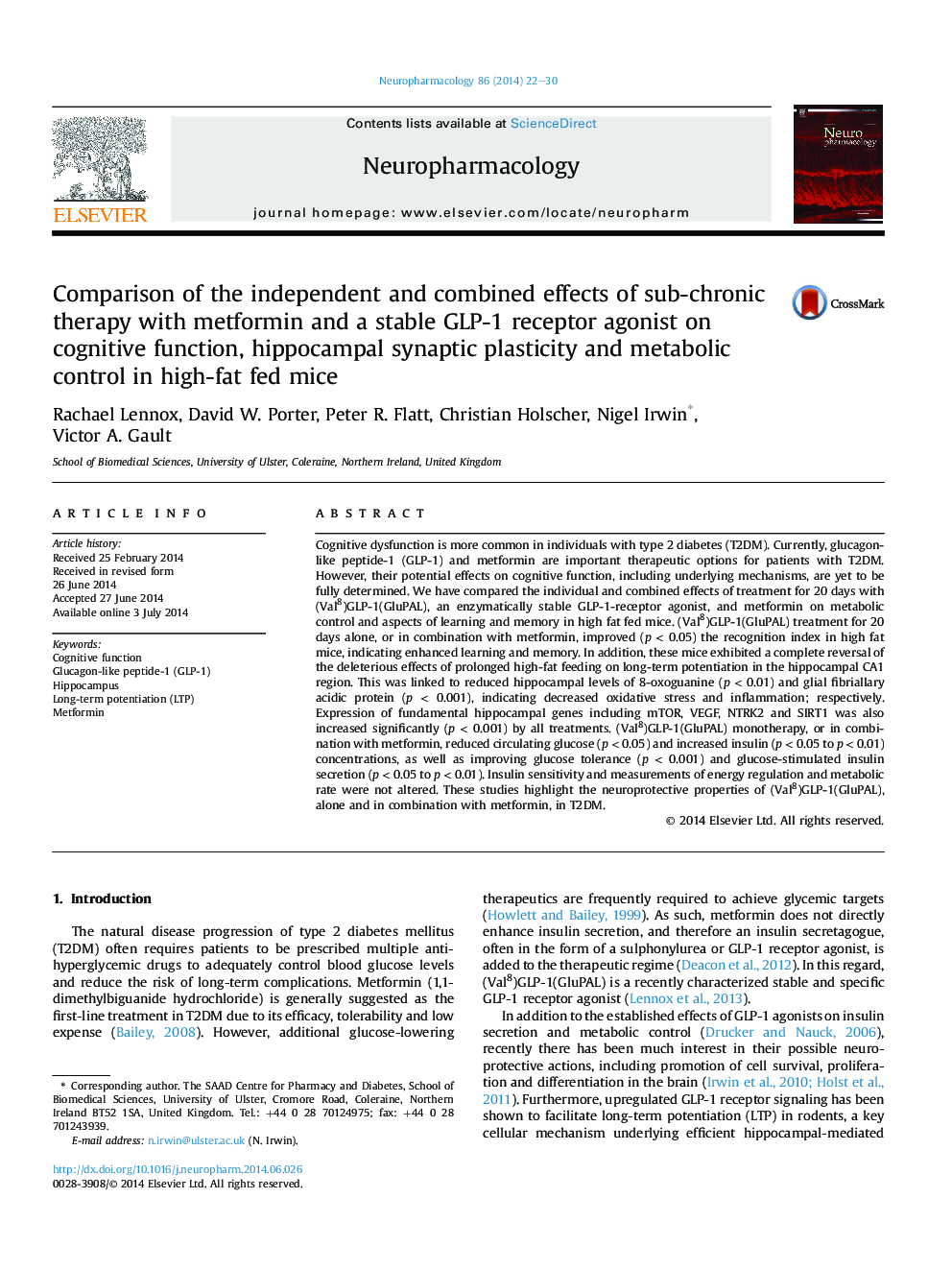| Article ID | Journal | Published Year | Pages | File Type |
|---|---|---|---|---|
| 5814164 | Neuropharmacology | 2014 | 9 Pages |
Abstract
Cognitive dysfunction is more common in individuals with type 2 diabetes (T2DM). Currently, glucagon-like peptide-1 (GLP-1) and metformin are important therapeutic options for patients with T2DM. However, their potential effects on cognitive function, including underlying mechanisms, are yet to be fully determined. We have compared the individual and combined effects of treatment for 20 days with (Val8)GLP-1(GluPAL), an enzymatically stable GLP-1-receptor agonist, and metformin on metabolic control and aspects of learning and memory in high fat fed mice. (Val8)GLP-1(GluPAL) treatment for 20 days alone, or in combination with metformin, improved (p < 0.05) the recognition index in high fat mice, indicating enhanced learning and memory. In addition, these mice exhibited a complete reversal of the deleterious effects of prolonged high-fat feeding on long-term potentiation in the hippocampal CA1 region. This was linked to reduced hippocampal levels of 8-oxoguanine (p < 0.01) and glial fibriallary acidic protein (p < 0.001), indicating decreased oxidative stress and inflammation; respectively. Expression of fundamental hippocampal genes including mTOR, VEGF, NTRK2 and SIRT1 was also increased significantly (p < 0.001) by all treatments. (Val8)GLP-1(GluPAL) monotherapy, or in combination with metformin, reduced circulating glucose (p < 0.05) and increased insulin (p < 0.05 to p < 0.01) concentrations, as well as improving glucose tolerance (p < 0.001) and glucose-stimulated insulin secretion (p < 0.05 to p < 0.01). Insulin sensitivity and measurements of energy regulation and metabolic rate were not altered. These studies highlight the neuroprotective properties of (Val8)GLP-1(GluPAL), alone and in combination with metformin, in T2DM.
Keywords
Related Topics
Life Sciences
Neuroscience
Behavioral Neuroscience
Authors
Rachael Lennox, David W. Porter, Peter R. Flatt, Christian Holscher, Nigel Irwin, Victor A. Gault,
